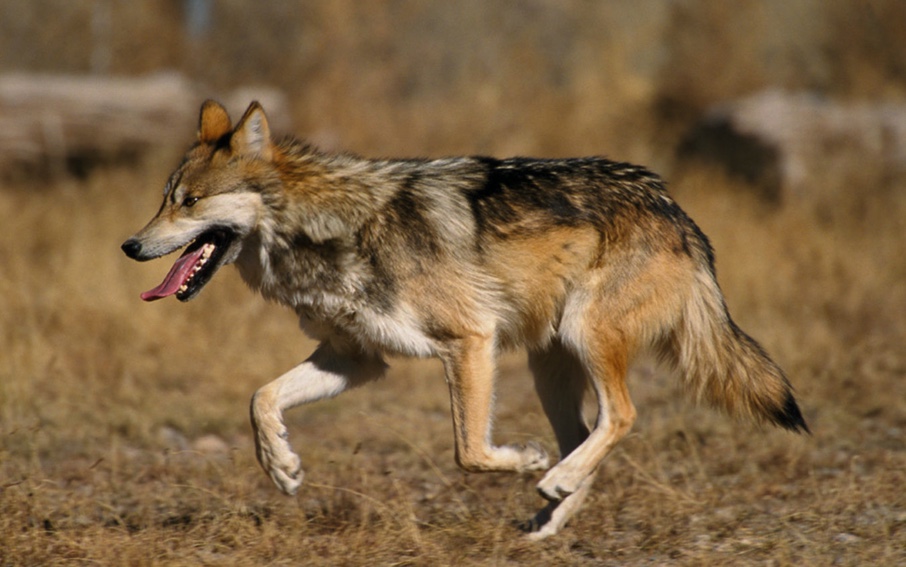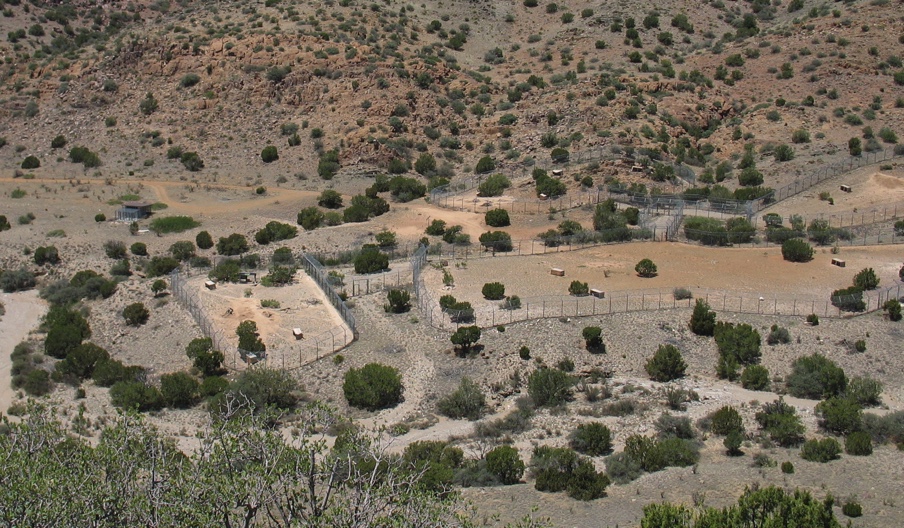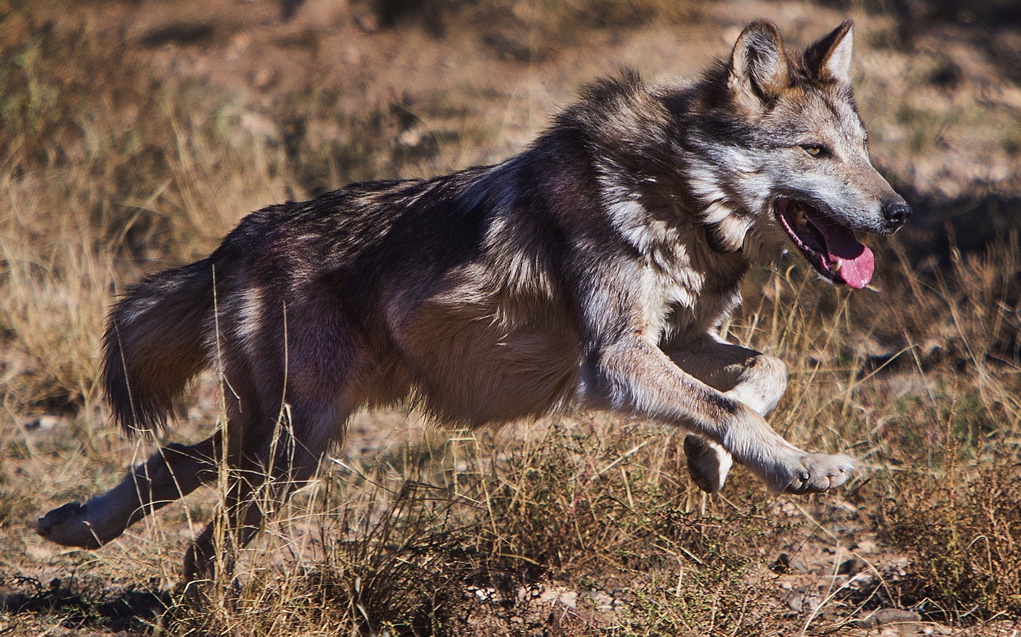The Mexican gray wolf made the news recently. Good news it was, too. But the story goes back much further.

The Mexican gray wolf (Canis lupus baileyi) is the smallest of five subspecies of the gray wolf. Males grow up to about 80 pounds and females about 50 pounds; they stand about two and one-half feet tall at the shoulder. They have thick coats that vary widely in color from gray to brown, resembling at a distance the much smaller coyote. They live in small packs, usually fewer than five individuals, and females have 1-6 pups annually. Their natural range covers northern Mexico, plus the states of New Mexico, Arizona and western Texas.
That was the range, until the late 1800s, when livestock ranching became big business and ranchers wanted the wolves gone. Along with a natural diet of deer, elk and smaller game, wolves ate livestock when available. The U.S. government and western states began programs to shoot and poison Mexican wolves, including giving poisons to the nation of Mexico to use on their own wolves. Populations of the wolf declined rapidly and, by the 1950s, the Mexican gray wolf was determined to be extinct in the wild.
With the passage of the Endangered Species Act in 1973 (learn more about the ESA here) and under pressure from conservation organizations, the U.S. Fish and Wildlife Service listed the Mexican subspecies of gray wolf as endangered on April 28, 1976. Subsequent changes to the listing occurred on March 9, 1978 and February, 2015, but the subspecies continues to be listed as endangered.

Soon after the initial ruling in 1976, seven known wolves were gathered together for a captive breeding program, now centered at Sevilleta National Wildlife Refuge, south of Albuquerque, New Mexico. The captive breeding proved successful (and continues to be so), and in 1998, wolves began to be released into the wild at locations in New Mexico and Arizona.
The reintroduced wolves have prospered. A news release by the U.S. Fish and Wildlife Service in February, 2023, reported that by the end of 2022, 59 wolf packs had established territories, 40 in New Mexico and 19 in Arizona. The total estimated population is now 241, including 31 breeding pairs that had 121 pups last year. The population grew by 23% between 2021 and 2022, a massive increase.
The Mexican gray wolf still has a long way to go, however. In the latest revision of the recovery plan (September, 2022), the stated goals for delisting the sub-species include having two self-sustaining populations (one in the U.S. and one in Mexico) that average at least 320 (U.S.) and 200 (Mexican) individuals over an 8-year span, are growing year to year and are genetically diverse. These conditions are expected by 2043.

So, three cheers for the Mexican gray wolf and for the partners in the U.S. and Mexico who are making its recovery possible. And let me say that it is an especially sweet story for a loyal fan of the North Carolina State University Wolfpack. As we say here, “Go Pack!”
References:
Center for Biological Diversity. Saving the Mexican Gray Wolf. Available at: https://www.biologicaldiversity.org/species/mammals/Mexican_gray_wolf/index.html. Accessed March 6, 2023.
New Mexico Game and Fish. Mexican Gray Wolf. Wildlife Notes. Available at: https://www.wildlife.state.nm.us/download/education/conservation/wildlife-notes/mammals/Mexican-gray-wolf.pdf. Accessed March 6, 2023.
US Fish and Wildlife Service. 2023. Mexican Wolf Numbers Soar Past 200 in Latest Count. Available at: https://www.fws.gov/press-release/2023-02/mexican-wolf-numbers-soar-past-200. Accessed March 6, 2023.
US Fish and Wildlife Service. 2022. Mexican Wolf Recovery Plan, Second Revision, September 2022. Available at: https://ecos.fws.gov/docs/recovery_plan/Final%20Mexican%20Wolf%20Recovery%20Plan%20Second%20Revision%202022%20signed_508%20compliant_1.pdf. Accessed March 6, 2023.
US Fish and Wildlife Service. Sevilleta National Wildlife Refuge. Available at: https://www.fws.gov/refuge/sevilleta. Accessed March 6, 2023.

